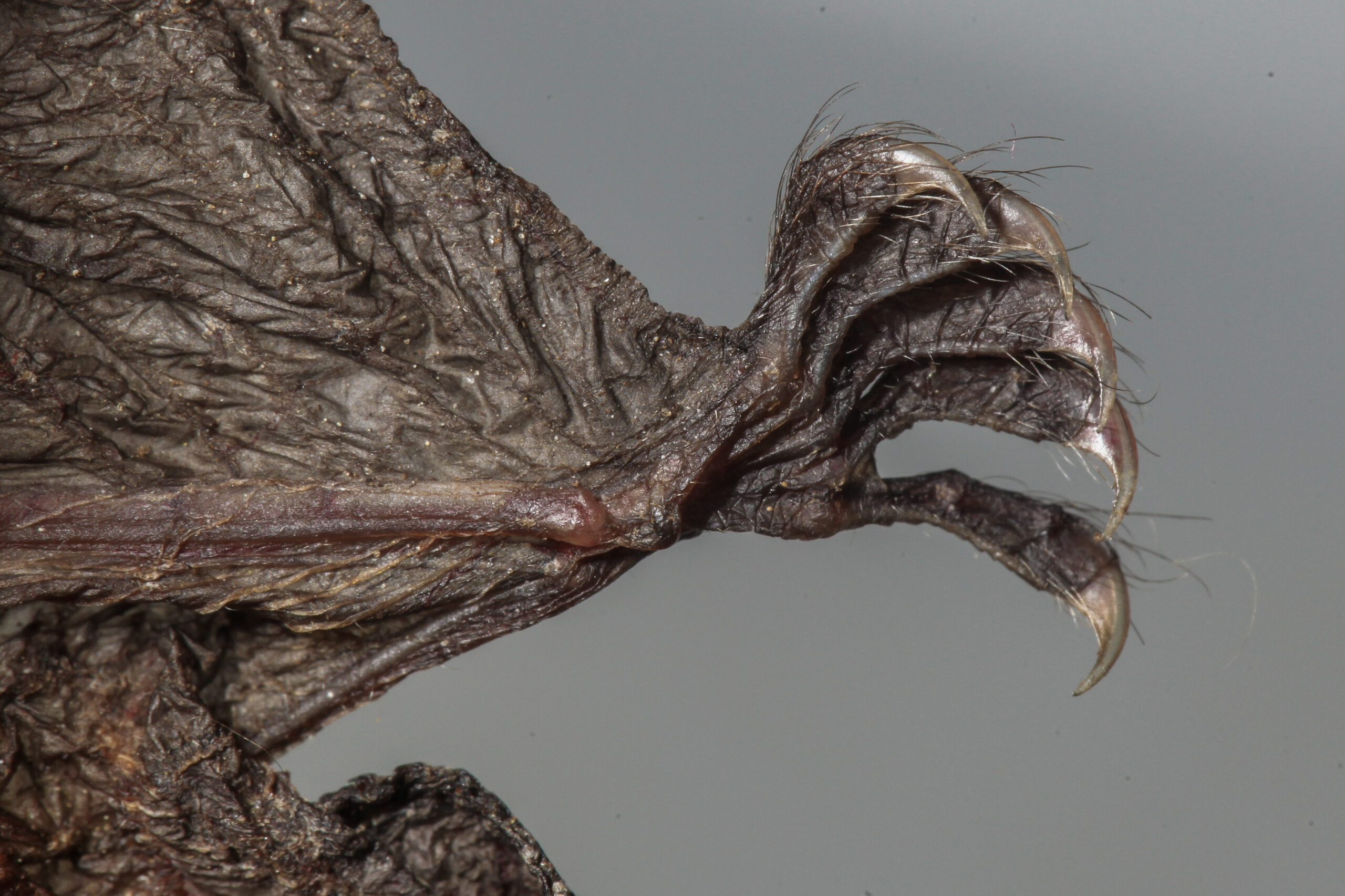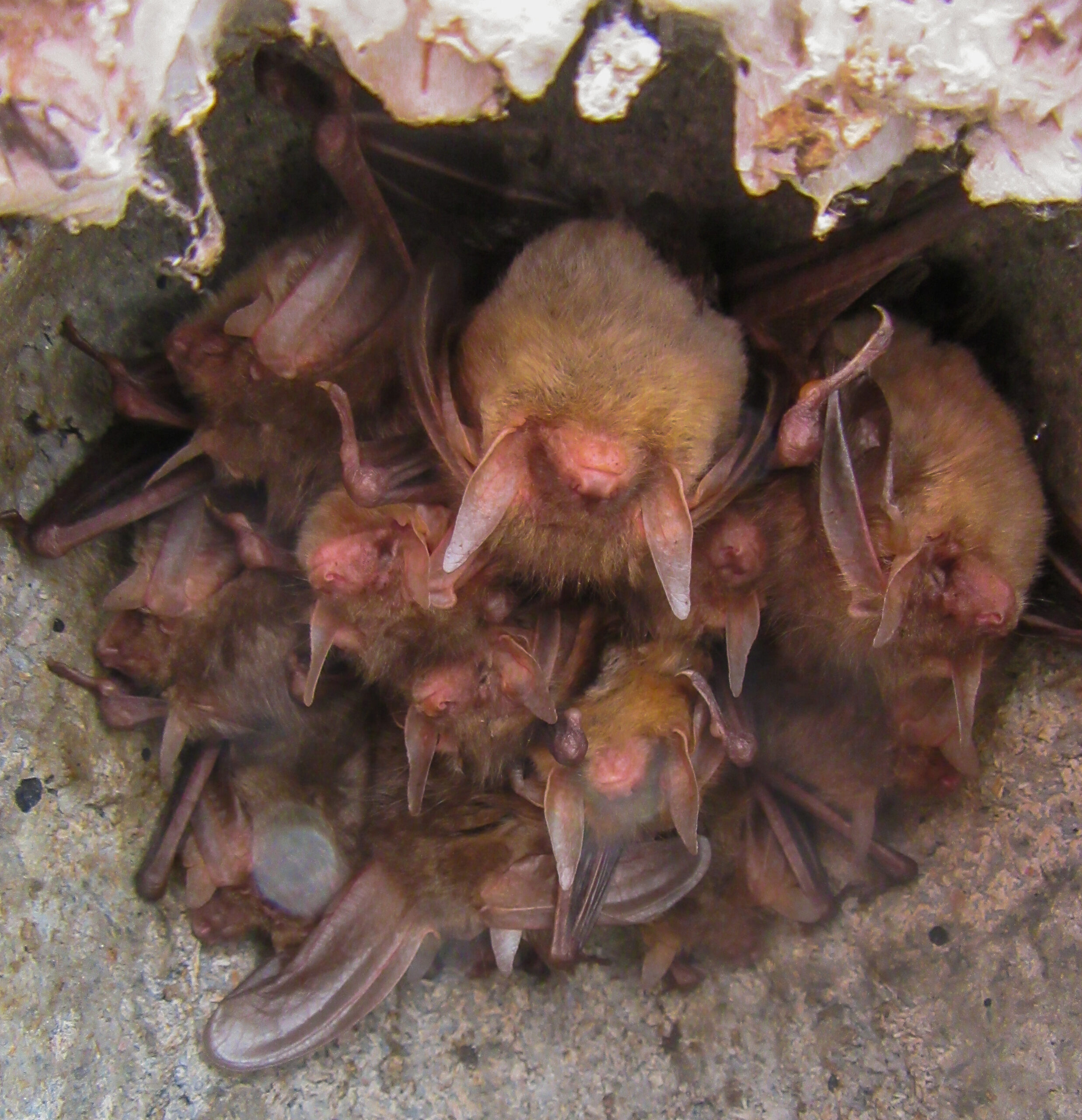Filter prey echoes from other noises, while avoiding crashes with trees and leaves
Navigating through chaos
Bats are amazing creatures with sensory capabilities we cannot even imagine. Using sonar, they can fly around in complete darkness, something owls cannot do. Not only can they avoid collisions with obstacles like trees or leaves, they can also detect prey and accurately determine its size, distance, and speed.
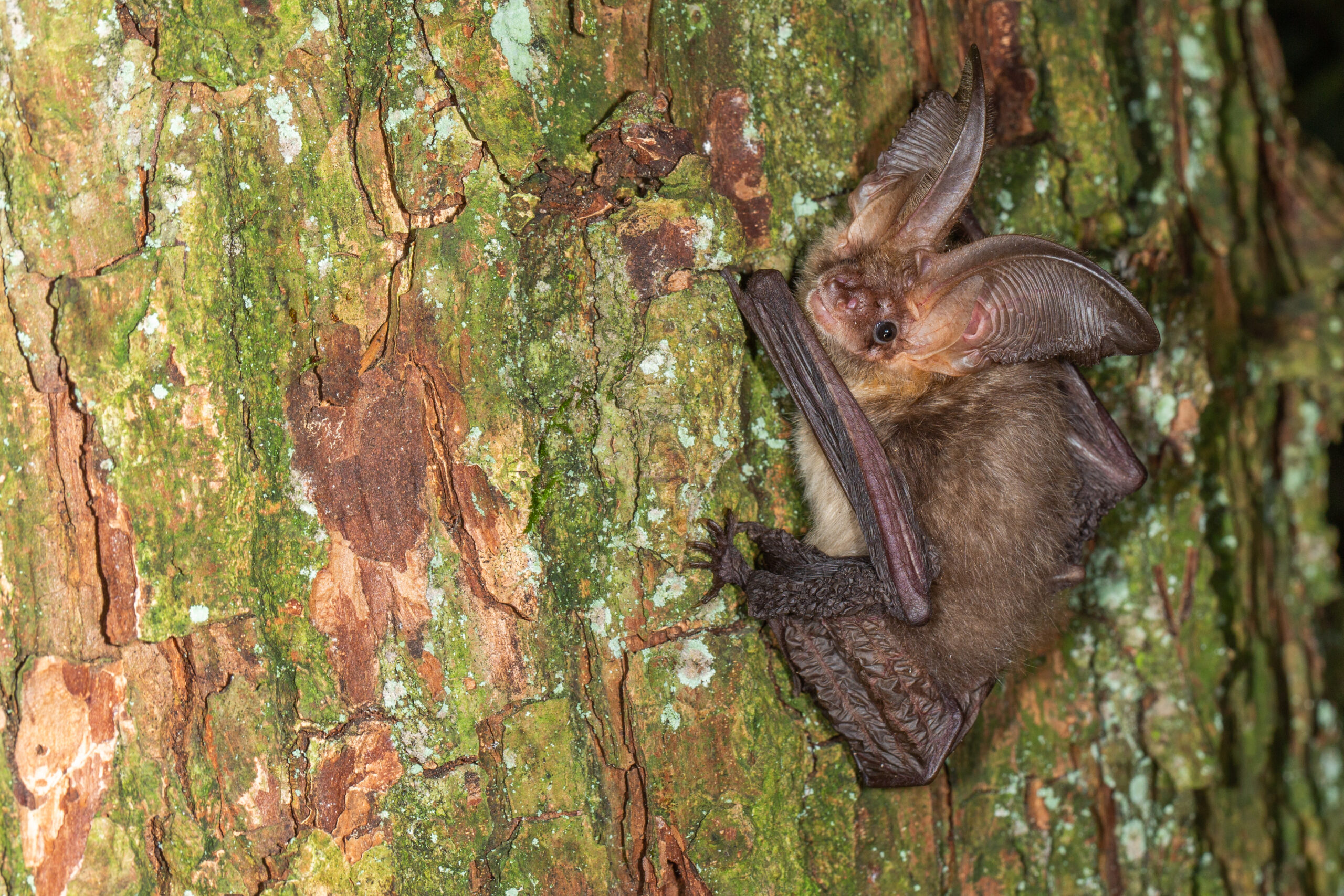
At the same time, they must filter the echoes of their prey from the chaos of noises from vegetation and other non-prey items in the vicinity. As such, bat brains are organised in such matter that echoes can be processed in various ways and in different parts of the brain.
Sonar
Brown long-eared bats produce soft, short sonar ‘clicks’ with their vocal cords and emit these through their mouths. This sonar is used to collect information about their nearby environment and potential prey, like a moth, moving through the air or hiding under a leaf. The sonar pulses are very short, which enables many pulses to be transmitted in a short time. This high sampling frequency of echoes provides detailed information from the bat’s surroundings.
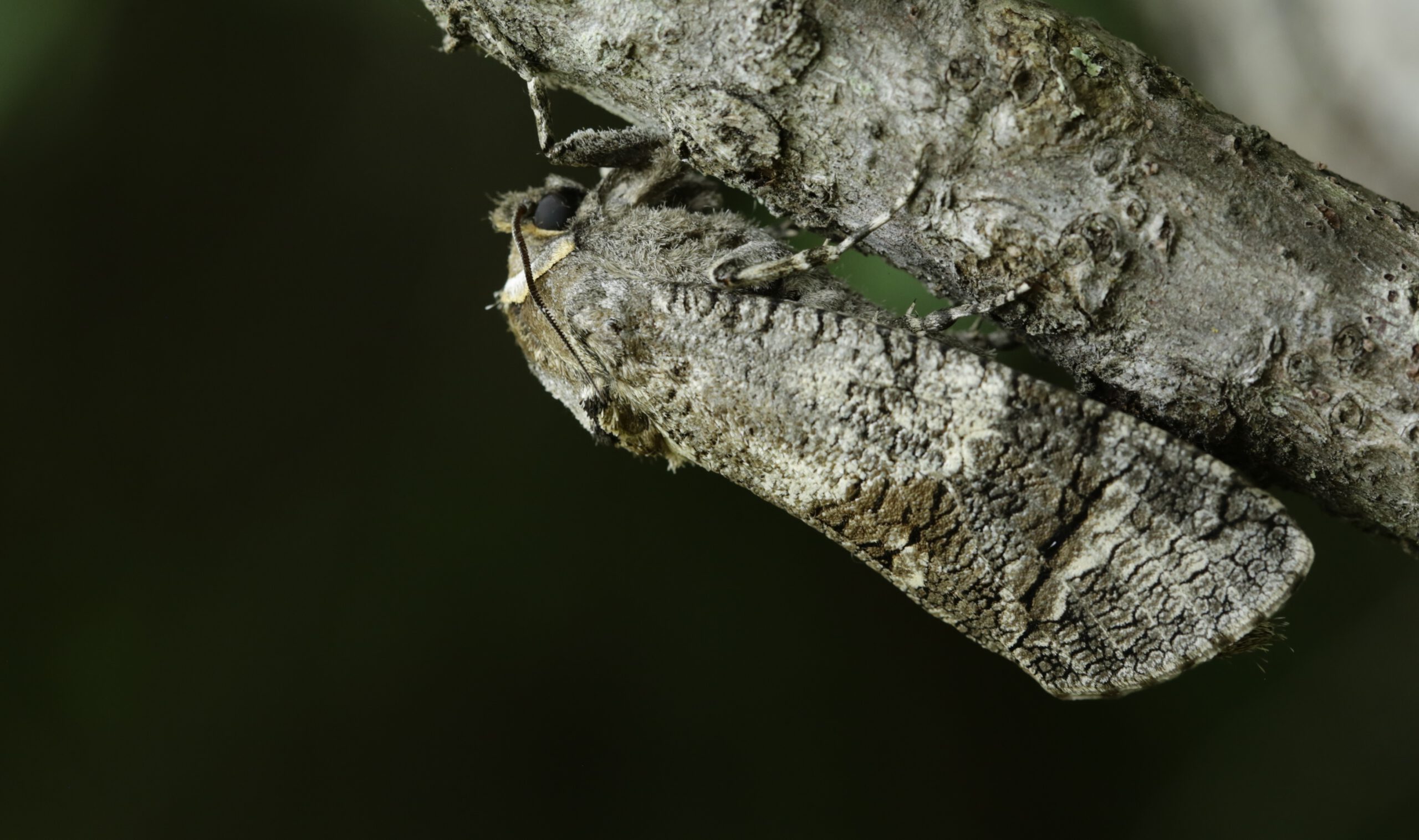
Long-eared bats hunt among trees, which makes it hard to navigate by sonar. However, their sonar gear is accompanied by really huge ears, which will catch the faintest sonar rebound of any object. Long-eared bats are exceptional among bats, because their ears can even detect prey upon the noises prey make themselves, so without the use of sonar! Like in many owls, a skin flap (called the tragus; see photo) prevents direct sounds of the environment from entering the ear opening without being reflected by the ear first.
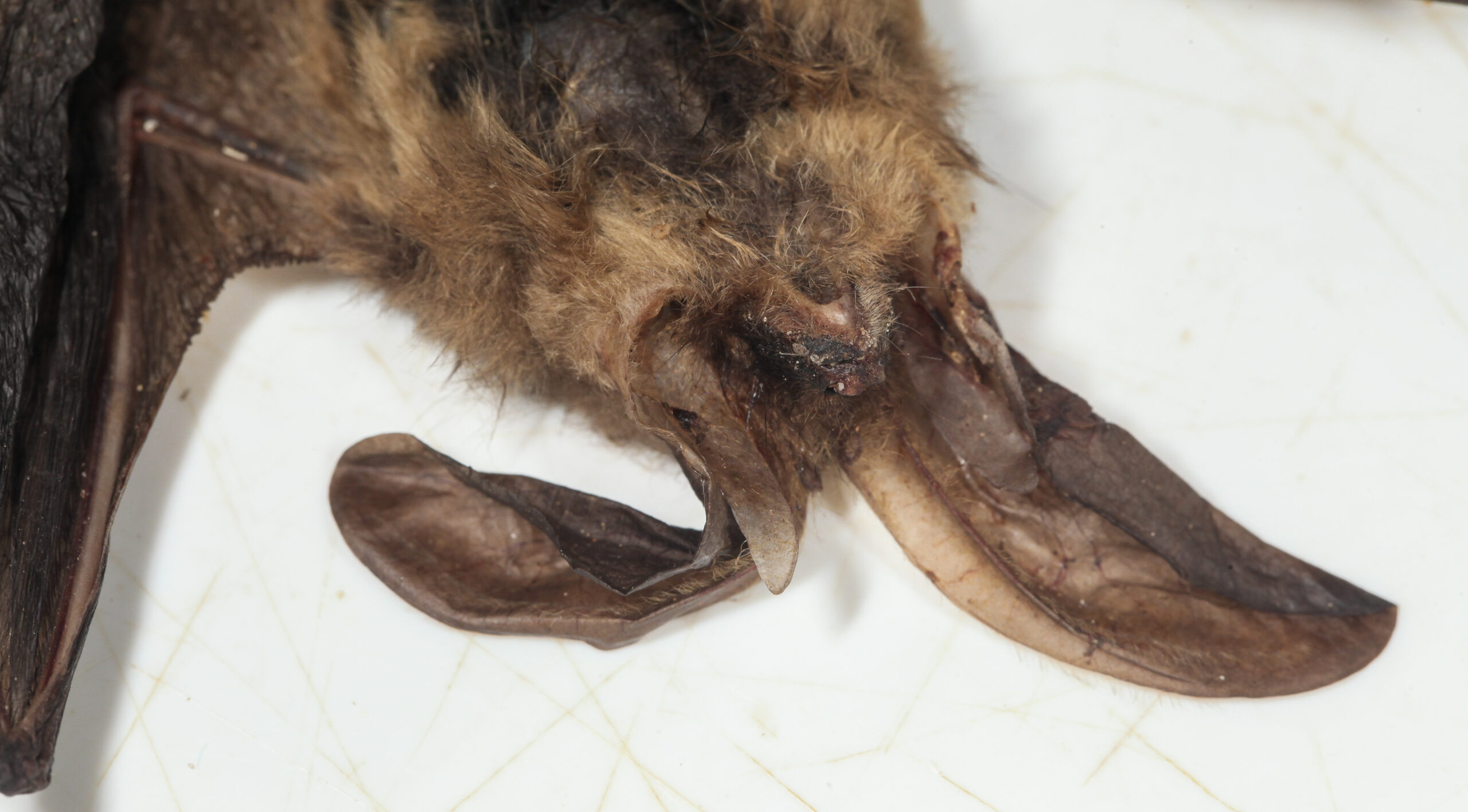
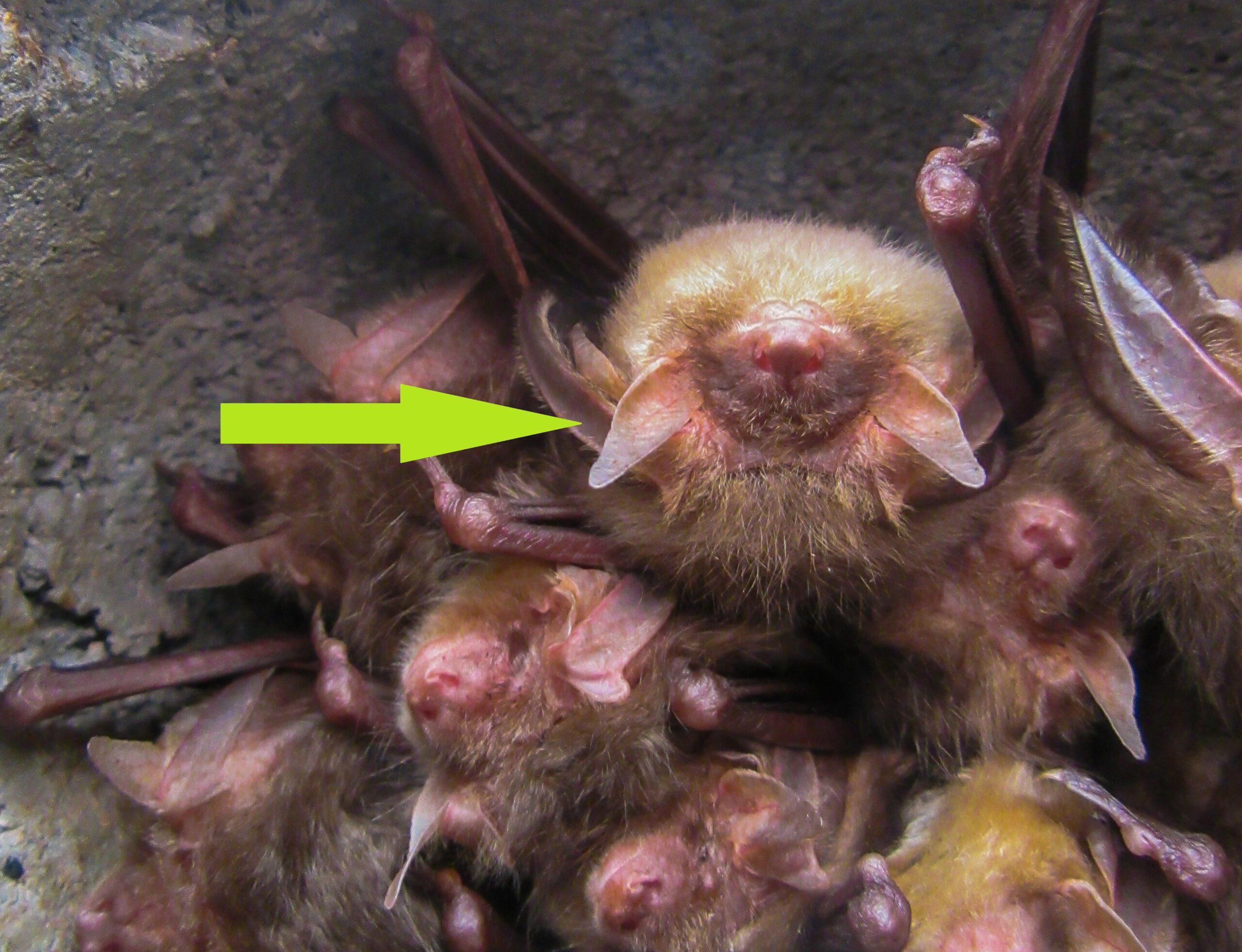
Large-winged mammals
Another exceptional feature of bats is of course their ability to truly fly, as they are the only group of mammals that can do so. Long-eared bats have a very low wing loading, enabling them to fly perfectly at low speed. Not to mention, flying fast would also be a challenge, as the large ears would cause an enormous drag in flight.
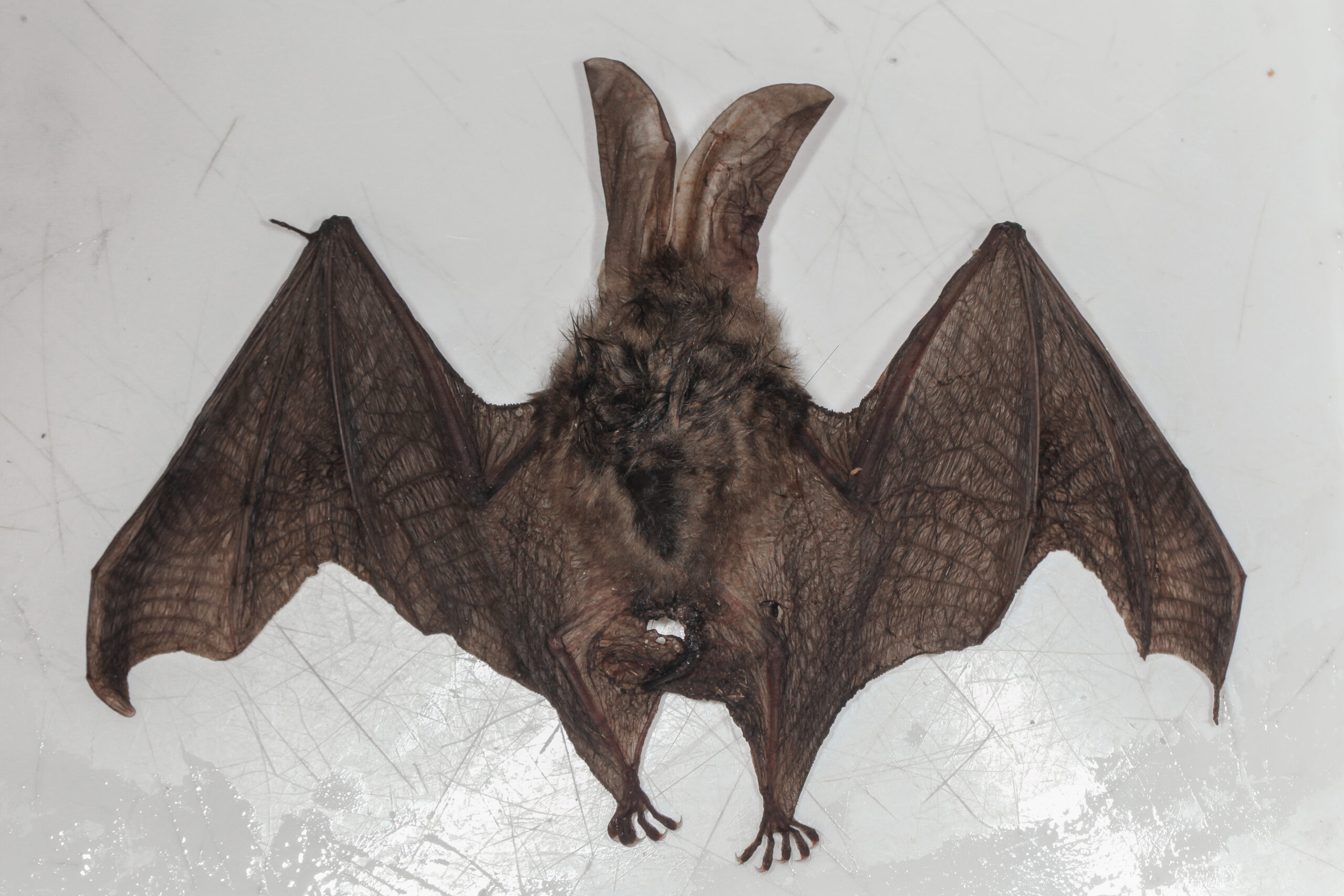
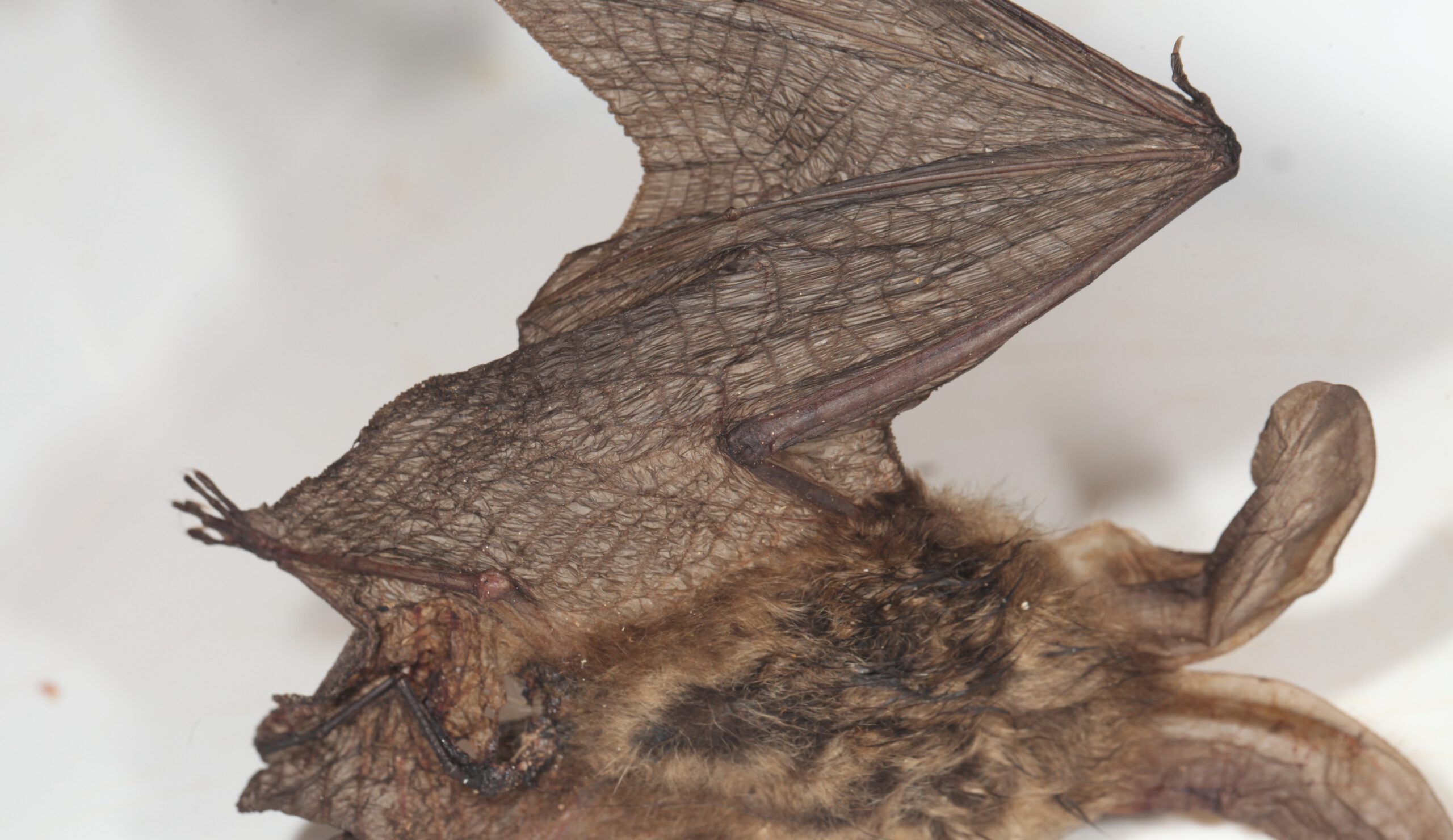
The wing is not only confined to the arms, but stretches from between the fingers to the hind legs and tail, creating a large surface to catch lift.
Continue reading
Bendy backbone
Besides benefitting from the extra lift it provides in flight, bats also use their tail skin to scoop insects from the air, which are then taken from the tail with their mouth. The back bone has great flexibility to do so, and is first of all enabled by the position of the neck: although bats fly with their snout forward, the neck attaches to the skull not from behind, but from below.
This makes that at rest (or flying face-forward) the neck is very strongly curved, and is not (as in birds) paralleled by the windpipe or oesophagus, which run straight. This positioning makes it feasible to grab prey out of their tail skin with their mouth.
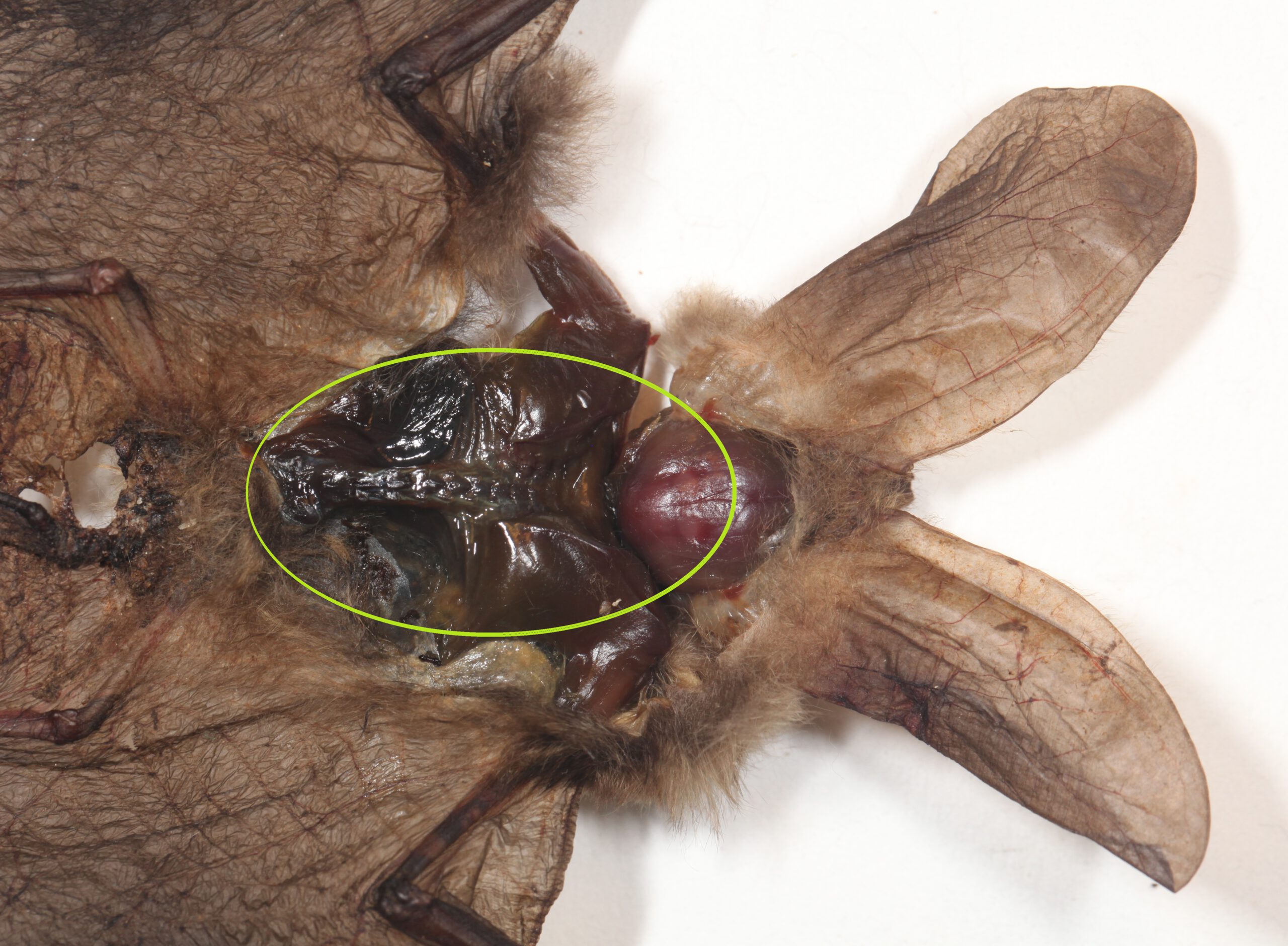
As brown long-eared bats eat insects, as many bat species, they cannot find food during winter colds. Whereas many species migrate, brown long-eared bats find a place to hibernate close to their summer grounds. They can crawl away in the tiniest cracks among bricks or in trees.
To do so, their bodies are strongly flattened and the rib cage fans outward to the tail-end to provide room for the internal organs. The intestine is placed next to the stomach instead of behind it. In females, the rear section of the body cavity is reserved for the developing embryo.
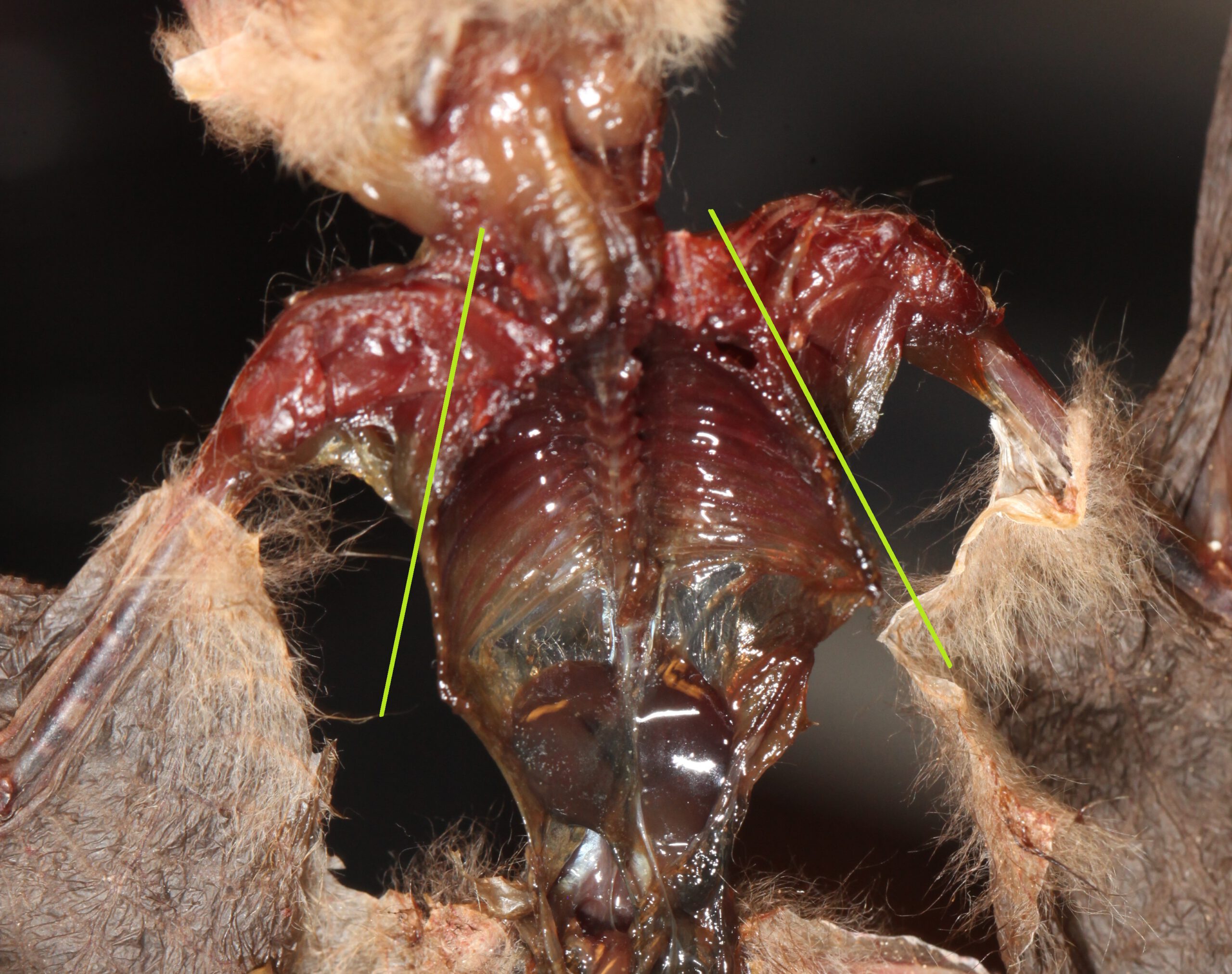
Processing meals
Long-eared bats can catch quite large prey for their body size, like large moths. They use specific sites where they dismember such large prey and chew the bodies away with their sharp teeth.
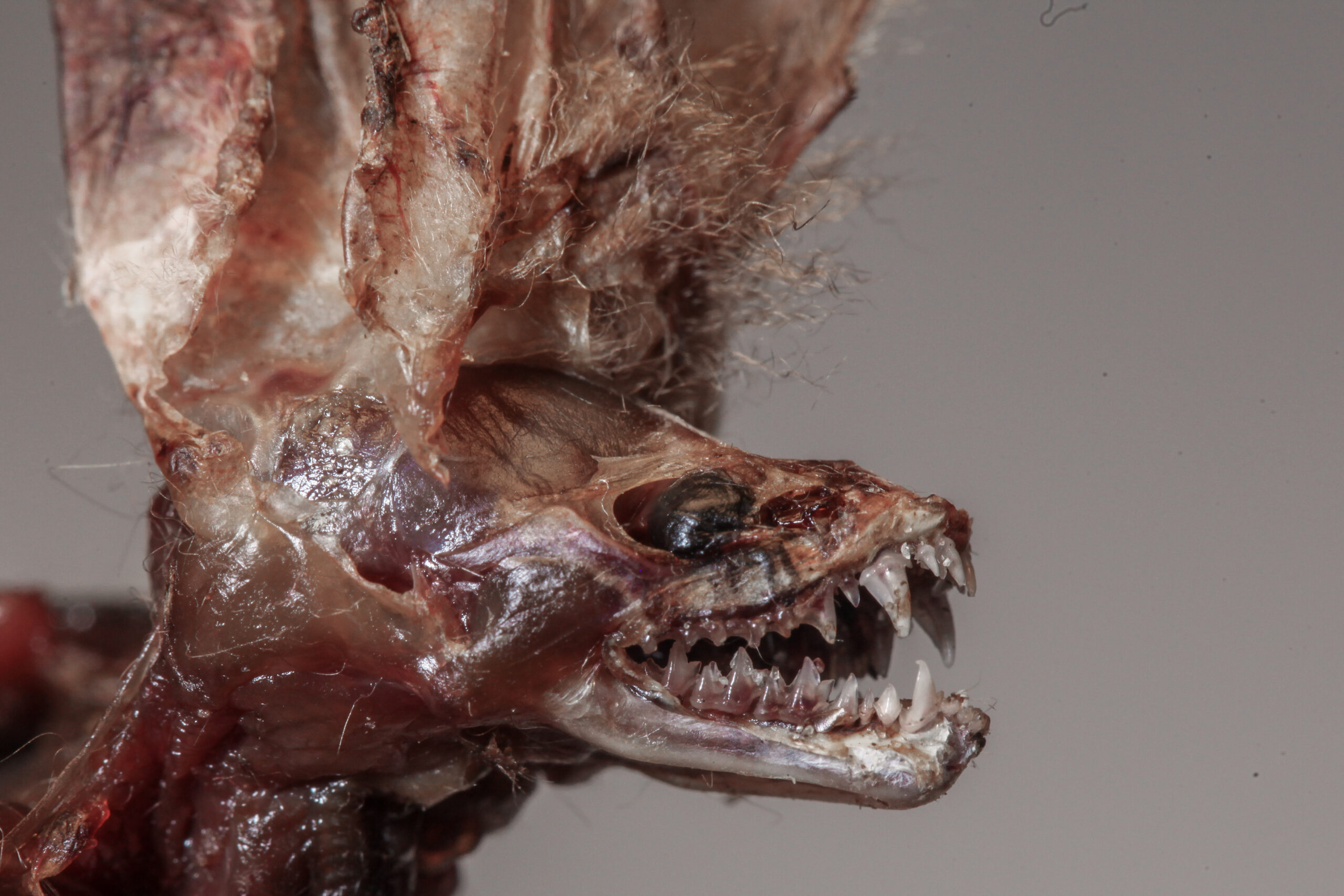
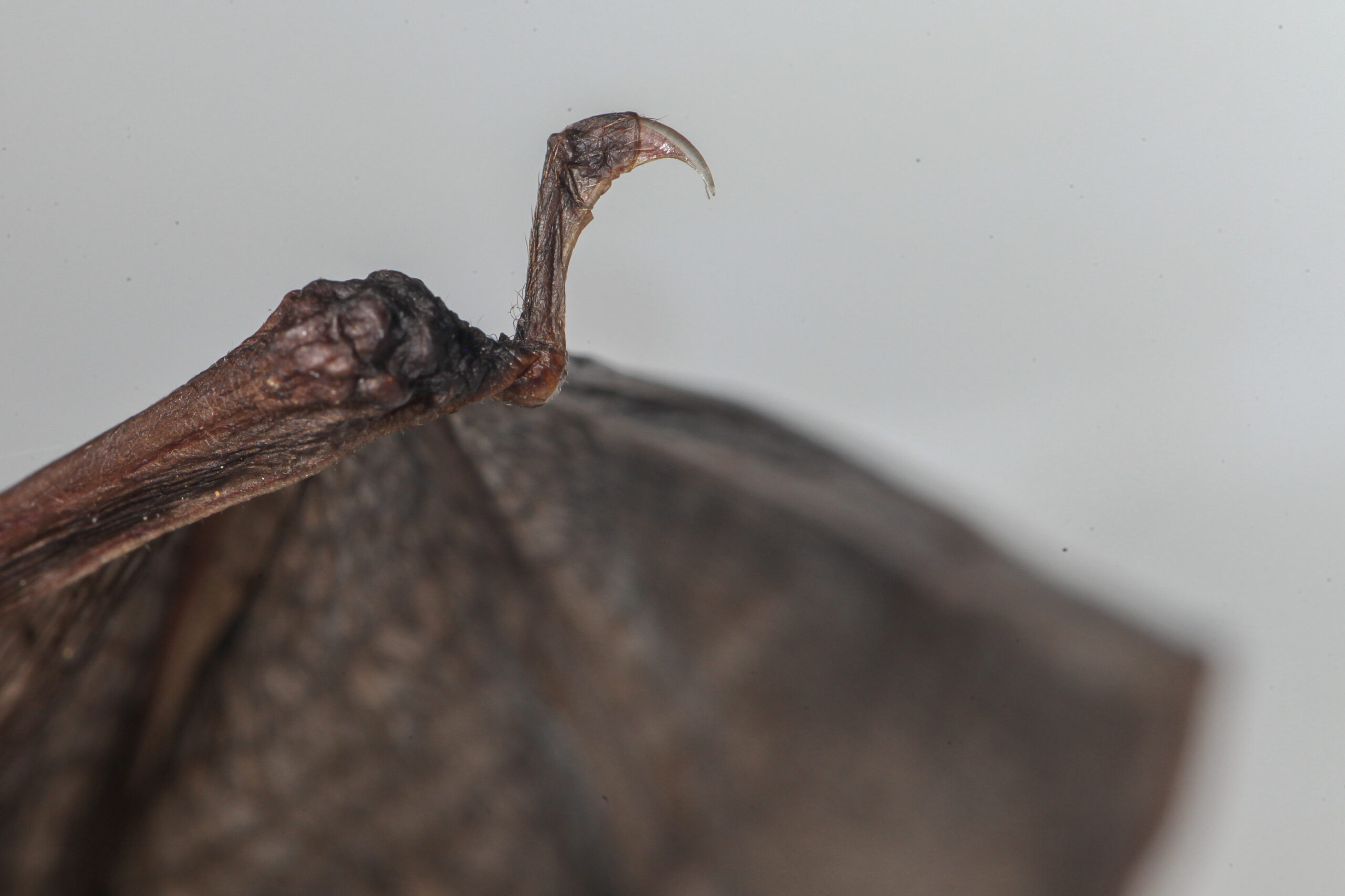
When doing so, they can use their thumbs, which are typically used for walking and climbing, also for manipulating the prey. At a prey preparation site, moth wings may pile up underneath.
Living upside-down
As they always do when in rest, brown long-eared bats fold their huge ears under their wings, to prevent them from freezing or dehydration during hibernation. The hind feet of bats are turned. This adaptation serves to provide grip with their strongly curved nails, when dangling from a wall head-down.
